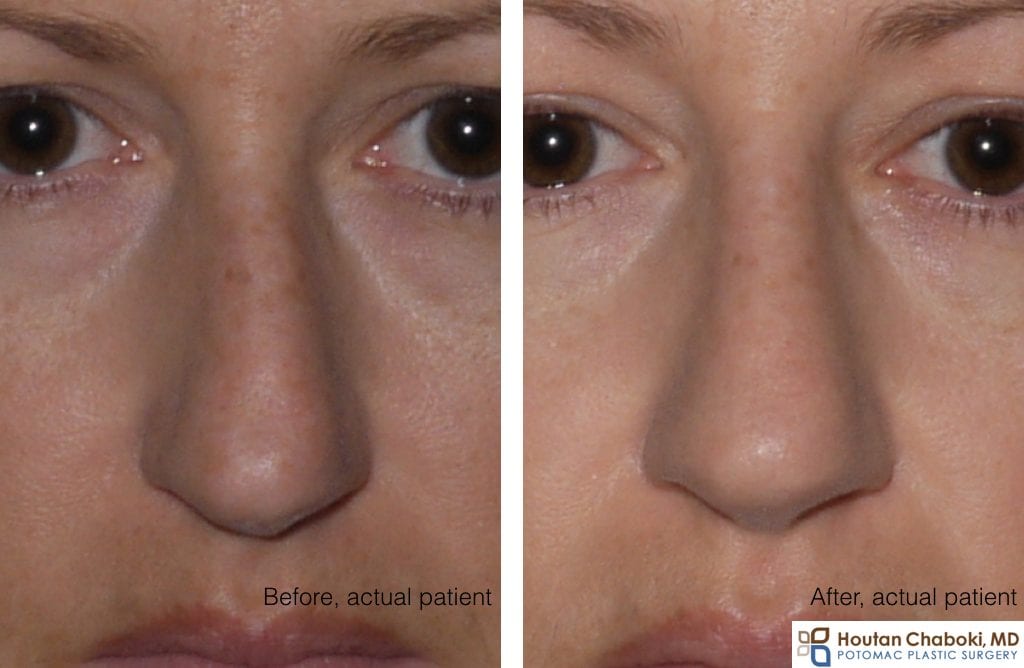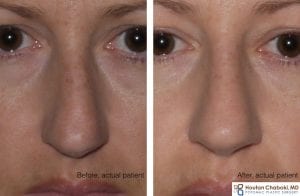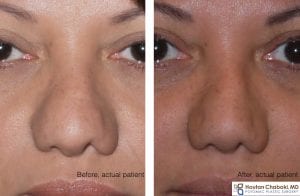Rhinoplasty is one of the most common cosmetic surgical procedures. In fact, rhinoplasty has been the most commonly requested facial surgical procedure for several years. Patients worldwide request rhinoplasty for a variety of reasons: to reduce a bump, lift the nasal tip, or improve symmetry. Patients with a deviated septum also often wonder if they require septoplasty in addition to rhinoplasty.
Septoplasty is surgery to improve a deviated septum, a very common problem. The nasal septum is a wall of cartilage and bone that divides the nose into right and left passageways. Often due to natural growth during facial development, a portion of this cartilage and/or bone wall may become deviated, asymmetric, or twisted. Nasal injury or a broken nose can also deviate the nasal septum. Most are unaware they have a deviated septum, unless they have nasal symptoms such as blockage, snoring, or congestion.
Plastic surgeons will evaluate the nasal septum during rhinoplasty consultation. A physical examination is all that is needed for a diagnosis. Your plastic surgeon will examine both the external and internal nose. Sometimes a small camera is placed inside the nostrils for visualization.
Who needs a septoplasty with rhinoplasty? The answer varies but usually involves those patients with:
- nasal or sinus symptoms;
- twisted or asymmetric nose; or
- need for cartilage grafts during rhinoplasty
As an example, a patient who may have previously injured their nose, who has chronic nasal allergy symptoms, and wants to improve their profile will more likely than not require septoplasty with rhinoplasty. When the nose is made smaller via rhinoplasty, your plastic surgeon may suggest a septoplasty to make the internal spaces larger for improved airflow. Below is an example of a rhinoplasty where a septoplasty was required to improve symmetry of the nose and chronic nasal congestion.
The nasal septum is the foundation of the nose and septoplasty is often required as part of rhinoplasty. – Houtan Chaboki, MD
Who doesn’t need a septoplasty with rhinoplasty? The answer also varies and specific to each patient and their rhinoplasty. Patients who may not require septoplasty include those who:
- don’t have a deviated septum:
- may have an asymptomatic deviated septum and are planning minor changes;
- have a relatively straight nose;
- don’t require cartilage grafts as part of their rhinoplasty.
For example, minor tip rhinoplasty (narrowing of the nostrils) usually does not require septoplasty. Below is an example of revision rhinoplasty, where the patient had tip narrowing and improvement of nostril symmetry and shape without septolasty.
Speak with a rhinoplasty surgeon to help determine if septoplasty is appropriate for you. Contact the office for a rhinoplasty and septoplasty consultation.




Leave a Reply